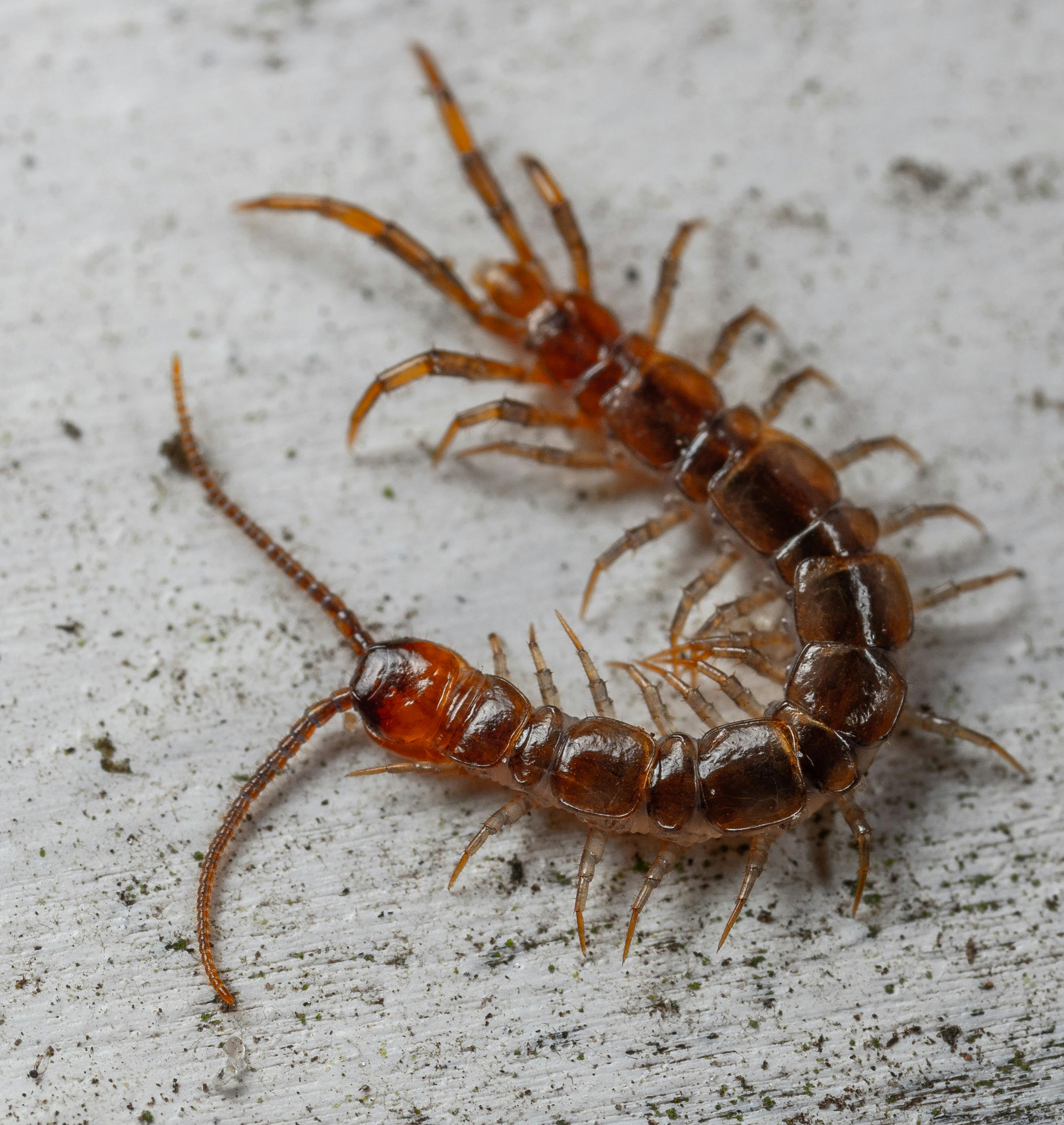All About Centipedes
Centipedes, commonly known as “hundred-leggers,” are elongated, predatory arthropods that can be found in various moist environments. While they play a role in controlling insect populations, centipedes can become a nuisance when they invade homes. Understanding their behavior and implementing control measures is key to managing their presence in your living spaces.
What are Centipedes?
Centipedes (class Chilopoda) are long, flattened, many-segmented arthropods. Each segment of their body, except the hindmost, bears a single pair of legs. Common names include house centipedes or “hundred-leggers,” and their scientific classification places them in the Chilopoda class.
Centipedes are nocturnal predators, primarily hunting small insects, spiders, and mites. They have venomous claws located just behind their heads, which they use to inject venom into their prey. These creatures are found worldwide, with around 3,100 known species. Centipedes are generally solitary and can live up to 7 years, depending on the species.
How to Identify Centipedes
Appearance:
- Body shape: Elongated, worm-like
- Color: Yellowish to dark brown, often with darker stripes or markings
- Legs: 15 to 177 pairs of legs (one pair per body segment)
- Size: Varies greatly from 1 inch (25 mm) to 11 inches (280 mm)
- Antennae: Long with dense hairs
- Claws: Venomous claws for capturing prey
Similar Pests: Centipedes are often confused with millipedes. However, millipedes have two pairs of legs per body segment and do not possess venomous claws. Centipedes are carnivorous, while millipedes are herbivores and detritivores.
Activity and Seasonality
Active Seasons: Centipedes are most active during the warmer months but can be found indoors year-round, especially in damp environments.
Lifecycle: Centipedes lay between 10 to 60 eggs, usually in moist environments. The eggs hatch after a few months, and the young centipedes go through several molts, shedding their exoskeleton to grow. They can live up to 7 years, depending on the species.
Where to Find Centipedes in or Around Your House
Common Habitats: Centipedes prefer moist environments and are commonly found under stones, in rotting logs, and in basements. They seek out areas with high humidity, such as bathrooms, crawlspaces, and potted plants.
Specific Hiding Spots: Centipedes tend to hide in crevices, under loose bark, or within piles of leaves and grass. Indoors, they are often found in damp basements or behind walls.
How to Get Rid of Centipedes
- Immediate Action: As soon as centipedes are spotted, reduce moisture levels in the affected area, eliminate their food sources, and seal cracks and crevices where they might enter.
- Professional Treatments: Pest control professionals can apply targeted treatments to eliminate centipedes and prevent future infestations, especially in high-risk areas like basements and crawlspaces.
- DIY Methods: Homeowners can use dehumidifiers to reduce moisture, apply insecticidal dust in crevices, and remove debris around the home to prevent centipede harborage.
How to Prevent Centipedes
- Seal Cracks: Close entry points around doors, windows, walls, and utility lines to prevent centipedes from entering your home. Pay special attention to basements, crawlspaces, and other areas where moisture tends to accumulate.
- Fix Leaks: Repair plumbing leaks and ensure proper ventilation in moisture-prone areas such as kitchens, bathrooms, and basements to reduce the humid environments that attract centipedes.
- Eliminate Food and Water Sources: Keep your home free of other insects that centipedes prey on by maintaining cleanliness, promptly cleaning up spills, and storing food in sealed containers. Reducing the availability of prey will make your home less attractive to centipedes.
- Home Maintenance: Regularly clean and declutter areas like basements, crawlspaces, and bathrooms where centipedes might hide. Trim vegetation around the exterior of your home to minimize outdoor hiding spots.
- Long-term Strategies: Maintain a clean, dry home environment by using dehumidifiers, ensuring proper drainage around your foundation, and performing regular inspections. Consider using preventative insecticides in high-risk areas to keep centipedes at bay.
- Professional Assistance: Consult with a pest control expert for tailored prevention strategies and regular inspections to manage and prevent Centipedes infestations effectively.
Conclusion
Centipedes are fascinating yet potentially troublesome pests that thrive in moist environments. By identifying their presence early and taking appropriate control measures, you can effectively manage their impact on your home.
If you’re dealing with a centipede infestation, contact Pest Control Consultants today for a free consultation and effective treatment plan. Let us help you keep your home pest-free and comfortable!
